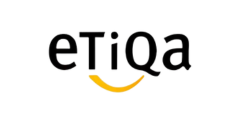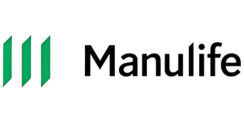
This article is updated as of 19/09/2024.
Do you presently have sufficient insurance coverage, should you be diagnosed with an unfortunate medical condition?
When is the last time you review your existing health and protection portfolio for major insurable events such as:
- Death and Terminal Illness coverage
- Total and Permanent Disability coverage
- Critical Illness coverage
- Early Critical Illness coverage
What is the recommended amount of insurance coverage?
Do understand that either under-budgeting or over-paying for insurance will certainly cost you dearly in the long-run. If you are under-budgeted for insurance coverage, you end up dipping into your personal savings to make up the monetary differences when an illness occurs. Similarly, being over-insured will resulting in lost opportunities to generate wealth on your hard-earned savings.
“Depending on your age and lifestyle, the optimum amount of insurance coverage you require may change over time.”
While there is no hard and fast rule on the right amount of insurance coverage, the yearly expenses method is commonly used as a guideline. This refers to your fixed financial commitment should you be unable to work due to an illness.
Whatsapp us to let a licensed financial adviser work out your needs at no cost to you.
Get insurance coverage when it is within your affordability
Due to the “risk-pooling” nature of insurance policies, your insurance premiums will only increase as you age. This is due to the additional risk incurred by the insurance company to provide the same amount compared to a younger healthy individual.
Similarly, there may be additional “loading” of insurance premium if there is a pre-existing medical condition. In the worst case scenario, your pre-existing medical condition can be totally excluded from the new insurance policy that you are taking up.
Note: Obtaining an insurance claim payout may result in the exclusion of existing medical condition. In certain cases, you may also face difficulties in obtaining new health insurance coverage.
Hence, always seek cover for any shortfall or gap in your insurance coverage as soon as possible.
Ideal insurance coverage for Early Critical Illness and Critical Illness

Whenever possible, seek to have the following insurance coverage for Critical Illness and Early Critical Illness.
- Early Critical Illness coverage: 3 to 5x of yearly expenses
- Critical Illness coverage: 5 to 8x of yearly expenses
Why do you need insurance coverage for Early Critical Illness and Critical Illness?
In the event of a major illness, your recovery does not end after your discharge from the hospital. While your medical and hospitalisation expenses are covered by your MediShield LIFE and Integrated Shield Plan (ISP). Any excess costs can then be paid via your Medisave account.
Your insurance claim for critical illnesses is meant to replace your income as you recover from the comfort of your home or vacation until you are ready to resume work. Your recuperation and recovery can far exceed a 8 years period, hence do not underestimate the importance of a lump sum payout.
Related article: 5 reasons why an Integrated Shield Plan is your top priority
Related article: 3 Best Integrated Shield Plan and Riders in Singapore (Updated)
The purpose of the insurance payout by the insurance company is to replace your lifestyle expenses as you recover at your own pace.
What is the purpose of an Early Critical Illness payout?
Certain medical conditions such as cancer may require a combination of medical procedures (Sugerical, Chemotherapy, Radiation, Immunotherapy, etc). Such treatment requires multiple treatments known to leave an individual feeling physically weak during recovery.
In the event of an early critical illness, it may be unrealistic to completely stop working for your lifetime. However, your early critical illness claim payout may allow you sufficient rest and recovery at your own pace.
What is the purpose of the Critical Illness payout?
Other chronic diseases such as heart attack or kidney failure may need lifetime medication and time-consuming dialysis treatments. Your working hours may be impacted on a regular basis. You may end up opting for a less stressful job scope over time as well.
Due to the severity of the illnesses, an insurance coverage for up to 8 times of your yearly expenses allows you to rest over a prolonged period before heading back to work.
Related article: Singlife Whole Life Product Review (Multiple payouts and continual coverage with a single rider)
Whatsapp us to let a licensed financial adviser work out your needs at no cost to you.
Note: In Singapore, the Life Insurance Association (LIA) has set standard definitions of all 37 Critical Illnesses that all members insurance companies must follow. However, insurance companies are allowed to offer their individual definitions for the Early Critical Illness that is covered by their policies.
Ideal insurance coverage for Total and Permanent Disability (TPD)

Whenever possible, seek to get Total and Permanent Disability insurance coverage based on the following:
- Total and Permanent Disability coverage for Male & Female: expenses catered to the average life expectancy of a person.
- For example, Josh is 35 years old. an average life expentancy of a male is about 80 years old. Josh should minimally cater (80-35) x annual expenses for his TPD coverage
- For example, Josh is 35 years old. an average life expentancy of a male is about 80 years old. Josh should minimally cater (80-35) x annual expenses for his TPD coverage
Why do you need insurance coverage for Total and Permanent Disability (TPD)?
While the odds of being Total and Permanent Disabled is lower the younger you are, the costs involved cannot be overstated. Not only are you likely to earn a reduced income, there may also be an additional financial burden on your close ones that are taking care of you.
The purpose of Total and Permanent Disability coverage is to ensure minimal financial disruptions to you and your close one’s lifestyle and finances. As such, it should minimally cater to the average life expectancy of a Singaporean male and female respectively.
What is the purpose of the Total and Permanent Disability payout?
With the restrictions on your mobility, someone else has to take care of your regular needs on a full-time basis. The financial cost may vary, depending on your choice of a professional caretaker, maid, nursing home, or your spouse. An insurance claim payout ensures that you can meet your financial and family commitment.
Ensure that you upgrade your ElderShield supplement to receive a lifetime of coverage once you turn 40. For the younger cohort, upgrade to CareShield Life. Both ElderShield supplement and Careshield Life Supplement premiums can be paid via Medisave, enhancing your coverage without hurting your finances.
Whatsapp us to let a licensed financial adviser work out a proposal for you at no cost!
Ideal insurance coverage in the event of Death

The importance of insurance coverage in the event of your death cannot be overstated. Aim for a death insurance coverage based on the following:
- Death coverage: Personal and Dependents financial commitments catered to the average life expectancy of a person.
- For example, Tina is 45 years old. an average life expentancy of a female is about 85 years old. Tina should minimally cater (85-45) x annual financial commitment for her death coverage
Personal financial commitments include – Mortgage, long-term joint loans, debts and funeral expenses
Dependents financial commitments include – Spouse, Child (cost of upbringing and education), Parent’s (if depend on your monthly allowances) and other applicable family commitments.
Why do you need insurance coverage in the event of Death
While death may be the end of your journey, it may not be so for your close ones. Any existing mortgage or loans are still payable, with the joint applicant taking on the full payment.
Your spouse that was partially or fully dependent on your income may have to take on additional work to make ends meets for family-related expenses. On top of that, it may also be challenging for elderly parents that require your income for a living.
What is the purpose of a Death payout?
Having a lump sum death payout ensures that your surviving family members do not have to take on your financial obligations. At the same time, this allows your close ones and dependants to have the financial stability you meant to provide them with if you were alive.
Whatsapp us to let a licensed financial adviser work out your needs at no cost to you!
What type of insurance plans should you get to cover your coverage shortfall?

Depending on your financial budget and current age, the choices available for insurance coverage may be limited as premiums increases as one age. Where insurance coverage is the main priority, seek plans that provide a high level of coverage within your budget.
Related article: Where do you start with your financial planning?
Whole Life insurance plan
A whole life plan provides high insurance coverage for life with add-on riders to cover for early critical illness, critical illness and other insurable events. The insurance premiums can be paid for a specific number of years or whole of life, depending on the level of health and protection coverage needed and financial objectives of taking up the policy.
Overview of whole life policies
- Insurance coverage: High
- Premium payable: High/ Average
- Lenght of coverage: Lifetime (or until the policy is surrendered for cash value)
- Wealth Accumulation: Average (Consist of guaranteed and non-guaranteed cash value)
The policy will accumulate guaranteed cash value over time, allowing for a lump sum withdrawal at a later stage in your life. Some policies allow the cash accumulated to be converted into an annuity with regular payout upon the insured attaining a certain age.
Related article: 3 Best Whole Life Insurance Plan in Singapore for Protection Coverage (Updated)
Related article: 3 things to consider before taking up a new financial product
Term Life insurance plan
Term insurance plans are usually taken up to provide coverage for a fixed period of time. This is used to supplement coverage shortfall that is only required for a period of time. The insurance premium increases significantly when you get older when your existing term coverage is over.
Consider using term insurance as your main source of coverage only if you are actively committing a regular sum for investment. The long-term capital appreciation on your investments can then be used to pay for continual term insurance coverage well over your late 60s.
Overview of term insurance policies
- Insurance coverage: High
- Premium payable: Average / Low
- Lenght of coverage: Usually to a specific age
- Wealth Accumulation: N.A (No cash value)
The premium payable is relatively low, especially if the additional coverage is only required up to your early 60s. As there are no savings or investment elements in a term policy, there will be no cash value upon maturity or termination.
Note: Premiums for term insurance are very high if you are starting a new plan after your 60s.
Related article: 5 Best Term Life Insurance Plan in Singapore (Updated)
Related article: Term or Whole Life? – Which is suitable for you (Detailed financial analysis)
Investment Linked Policy
An investment-linked policy consists of both insurance and investment element. The insurance premiums you pay monthly or yearly are being used to purchase investment units in multiple unit trust funds. Depending on the amount of insurance coverage required, some of your investments in the unit trust funds are then sold off to pay for your coverage.
The primary aim of an investment-linked policy is to accumulate high investment returns to negate the increasing cost of insurance coverage.
Overview of investment-linked policies
- Insurance coverage: High/ Average
- Premium payable: High/ Average
- Lenght of coverage: Usually to your 60s (Coverage is then removed due to high mortality charges)
- Wealth Accumulation: High (Cash value is non-guaranteed and dependant on investment returns)
As mortality charges increase over time, more investment units will be deducted for the same insurance coverage on a yearly basis. Hence, unit deducting coverage are usually removed when you reach your 60s.
Related article: Investment Linked Policies – Is it suitable for you?
Related article: 6 Best Investment Linked Policies in Singapore for Wealth Accumulation (Updated)
Contact Us!
Or Whatsapp us to let a licensed financial adviser work out a proposal at no cost to you.
All financial reviews and proposals provided are 100% free of charge. There will be no obligation to take up any proposed financial products or services in any way.
We compare quotations head to head on all leading insurers in Singapore
Our Partners

Our Partners










